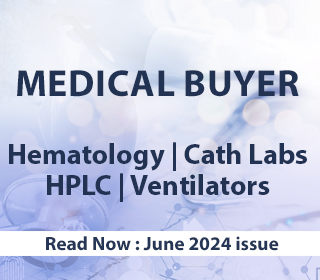Headlines of The Day
RPM has the potential to make healthcare smarter
When the COVID-19 virus seized the world and when social distancing and virtual care became a necessity, Remote Patient Monitoring (RPM) technologies proved to be a boon. These technologies greatly helped in eliminating unnecessary patient contact and eased the burden on hospitals, and healthcare professionals at large. Studies reveal that RPM helps healthcare providers to identify abnormal heart rhythms and issues with heart devices faster, reduces hospitalizations and emergency room visits, increases the quality of life for patients and makes patients equal partners in the care journey.
Moreover, Remote patient monitoring (RPM) is a promising field that has the potential to improve clinical outcomes and reduce chronic care costs. It uses digital technologies to collect health data from patients in one location and electronically transmit that information safely to healthcare providers in a different location for clinical examination. It allows healthcare providers to use mobile medical devices and other electronic devices to track vitals or/and analyze data in real-time. For example, RPM receives biometric data (such as heart rate, blood pressure, oxygen levels, and sleep quality) from a patient’s home, then examines & explains that data, and sends it to the caregiver at another place. Monitoring programs can collect a wide range of health data from the point of care, such as vital signs, weight, blood pressure, blood sugar, blood oxygen levels, heart rate, and electrocardiograms. RPM can undertake the same observations of a patient as a nurse at the bedside, so the optional re-admissions and appointments can be limited.
Similarly, patients with asthma, chronic obstructive pulmonary disease (COPD), hypertension, and cardiovascular diseases (CVDs) can use monitoring programs with biosensor technology for regular monitoring.
In the same light, RPM can be effectively utilized to monitor patients in the hospital. These technologies help in indicating if a patient’s health is deteriorating, in turn helping healthcare providers to take immediate action. Some of the technologies that provide RPM are:
(1) Electronic Health Record (EHR) and diagnostic application software that combines the data from the centralized repository and develop treatment recommendations and intervention alerts based on the analysis of collected data.
(2) Centralized repository to store data sent from sensors such as: Wearable Fitness Tracker-Wristbands provided with sensors keep track of daily activities and heart rate; Smart Health Watch-Smart-watches are advanced healthcare tools that include health notifications, fitness tracking, and sleep tracking; – Wearable ECG monitor-Wearable ECG monitor includes an electrocardiogram that sends the readings to the healthcare provider. It also traces atrial fibrillation (irregular heartbeat), distance, and height which further aids in preventive care; Wearable blood pressure monitor-This wearable monitor can record blood pressure and daily activity – like steps taken, distance traveled, and calories burned; and continuous glucose monitors (CGM) and continuous subcutaneous insulin infusion (CSII)- These can be used by people with type 1 diabetes (T1D), that can communicate wirelessly for monitoring purposes.
Around the world, patients are seeking shorter hospital stays, quicker recovery, cost efficiency and improved quality of life. RPM has the potential to make healthcare even smarter, but there is also a need to raise awareness about the tool and increase its uptake.
Dr Anita Mathew, Infectious Disease Specialist, Fortis Hospital Mulund.
MB Bureau












